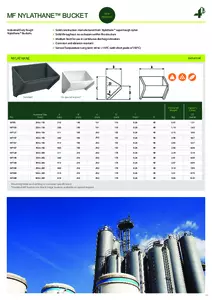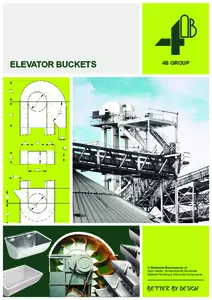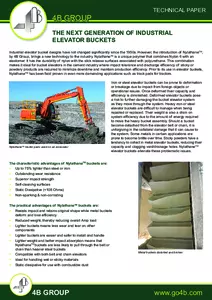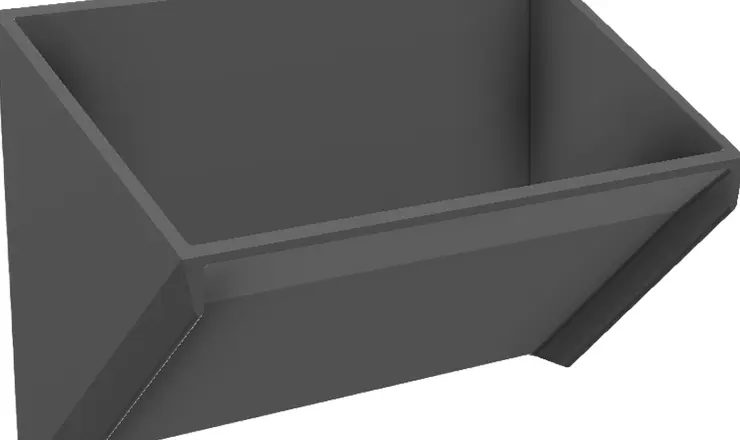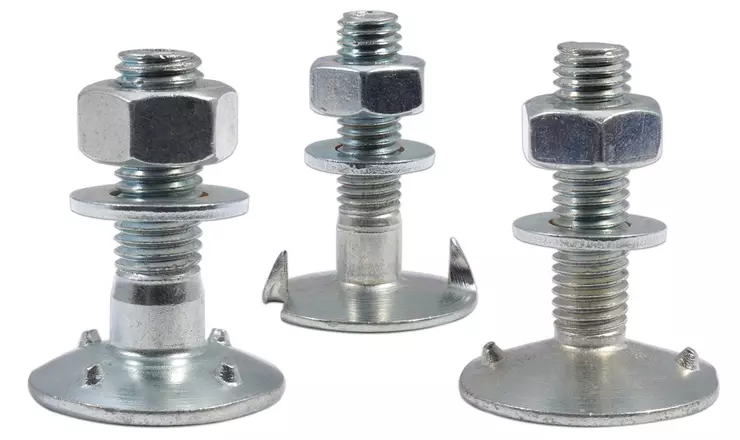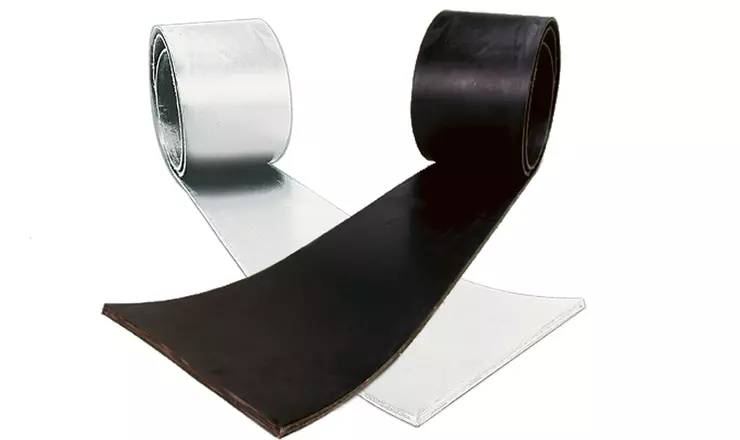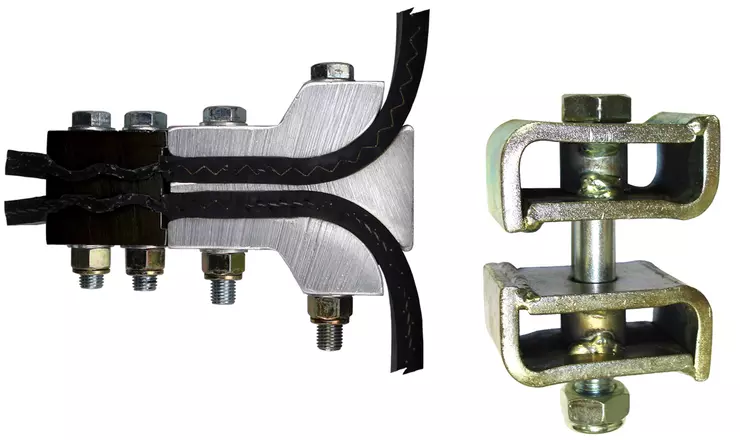4B MF Nylathane™ Continuous Elevator Buckets
Industrial Duty Tough Nylathane™ Buckets
MF85, MF105, MF127, MF147, MF167, MF187, MF128, MF148, MF168, MF188, MF208, MF248
Medium front design; industrial duty tough Nylathane™ buckets.

Product Features
- Solid construction: manufactured from Nylathane™ super-tough nylon
- Solid throughout: no occlusions within the structure
- Medium front for use in continuous discharge elevators
- Corrosion and abrasion resistant
- Service Temperature: Long term -40 to +110°C (with short peaks of 150°C)
Material
Nylathane™
Use by Industry
Industrial
Use by Product
Pellets & Light Agricultural,
Light Industrial,
Heavy Industrial
Specifications
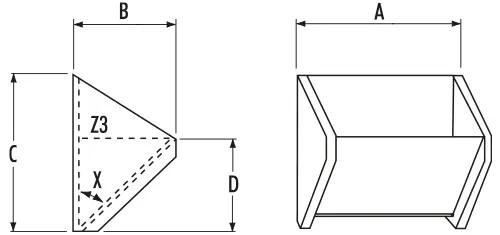
| Nominal size | A | B | C | D | T | Xº | Weight | Capacity (L) | ||
| MF Nylathane bucket | (mm) | (mm) | (mm) | (mm) | (mm) | (mm) | (kg) | Z3 (water) | ||
| MF85 | 200 x 130 | 210 | 140 | 191 | 110 | 8.26 | 48 | 0.97 | 1.31 | |
| MF105 | 250 x 130 | 260 | 140 | 191 | 110 | 8.26 | 48 | 1.14 | 1.65 | |
| MF127 | 300 x 190 | 311 | 190 | 292 | 155 | 8.26 | 48 | 2.15 | 3.98 | |
| MF147 | 350 x 190 | 362 | 190 | 292 | 155 | 8.26 | 48 | 2.40 | 4.67 | |
| MF167 | 400 x 190 | 413 | 190 | 292 | 155 | 8.26 | 48 | 2.65 | 5.37 | |
| MF187 | 450 x 190 | 463 | 190 | 292 | 155 | 8.26 | 48 | 2.90 | 6.06 | |
| MF128 | 300 x 200 | 311 | 216 | 292 | 178 | 8.26 | 48 | 2.34 | 5.18 | |
| MF148 | 350 x 200 | 362 | 216 | 292 | 178 | 8.26 | 48 | 2.61 | 6.08 | |
| MF168 | 400 x 200 | 413 | 216 | 292 | 178 | 8.26 | 48 | 2.87 | 6.99 | |
| MF188 | 450 x 200 | 463 | 216 | 292 | 178 | 8.26 | 48 | 3.14 | 7.89 | |
| MF208 | 500 x 200 | 514 | 216 | 292 | 178 | 8.26 | 48 | 3.51 | 8.70 | |
| MF248 | 600 x 200 | 616 | 216 | 292 | 178 | 8.26 | 48 | 4.05 | 10.51 | |
Mounting holes and venting to customer specification
*Standard MF buckets are black; beige buckets available on special request

